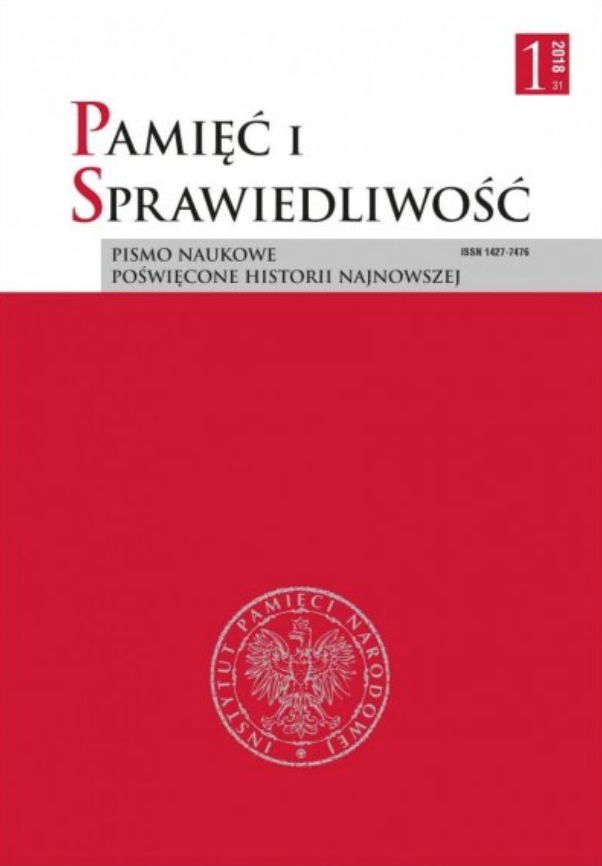Pierwszy okres istnienia polskiego Ministerstwa Spraw Zagranicznych 1918–1921 (koncepcje, organizacja, kadry)
The Earliest Period of the Polish Ministry of Foreign Affairs 1918–1921 (concepts, organisation, cadre)
Author(s): Wojciech SkóraSubject(s): Political history, Social history, Recent History (1900 till today)
Published by: Instytut Pamięci Narodowej
Keywords: Ministry of Foreign Affairs; diplomacy; diplomatic service; consular service; rebirth of Poland; Entente
Summary/Abstract: The article discusses the first two years of the Polish Ministry of Foreign Affairs’ existence, although it does not include analyses and summaries of Polish foreign policy. The topic is the ministry, its organisational structure, the underlying legal regulations, the development of the cadre, and its changing everyday workings. In other words, it is about the several hundred people who were responsible for the foreign relations of the country in its earliest period: from October 1918, when the Ministry of the Exterior was formally established in Warsaw, until the spring of 1921, when the first organisational structure of the Ministry of Foreign Affairs was adopted and the structure matured, which in general survived until World War II. The Polish Ministry of Foreign Affairs was built from scratch. Inspiration was taken from Germany and France, but only to a limited degree. The method consisted in experimenting with various approaches until a solution was adopted that had no simple analogy anywhere in the world. In the latter half of 1921, there were 26 embassies and 4 delegations under the authority of the Ministry. the mission of the General Commissariat of the Republic of Poland in Danzig was accorded special status. The network of consulates was improved and consisted of 49 independent missions, 17 consular departments within embassies, and 19 honorary consulates. In the latter half of 1921, the Ministry employed 632 public servants. After the restoration of independence, the creation of the Polish diplomatic cadre proceeded in two ways as a consequence of there being two centres of foreign policy – the Paris-based Polish National Committee, and the Warsaw-based Ministry of Foreign Affairs. Both used various reserves. Their recruitment methods also differed (they were merged in the spring of 1919). One of the officials taking part in the establishment of the Ministry stated that 90% of the candidates who satisfied the requirements were “counts and Jews”. They were also accepted. The former part of the statement was not far from the truth, but only in the case of principal posts in diplomacy. The Ministry in fact accepted many members of noble and aristocratic families. However, not many Jews were employed.
Journal: Pamięć i Sprawiedliwość.
- Issue Year: 31/2018
- Issue No: 1
- Page Range: 224-261
- Page Count: 38
- Language: Polish

